32 Flavorful Artisan Italian Semi-Soft Cheeses Worth Tasting
Italian semi-soft cheeses represent a delightful culinary treasure that bridges rustic tradition with sophisticated flavor profiles.
Crafted by passionate artisans, these remarkable dairy delicacies showcase the rich agricultural heritage of regions throughout italy.
Smooth textures and nuanced tastes characterize these exceptional products, which range from mild and creamy to subtly complex.
Skilled cheesemakers carefully select premium milk and employ time-honored techniques passed through generations, ensuring each wheel reflects regional character and craftsmanship.
The delicate balance between firmness and softness creates a unique sensory experience that distinguishes these cheeses from other dairy offerings.
Their versatility allows for multiple culinary applications, from elegant appetizer platters to sophisticated cooking preparations.
Regional variations contribute distinctive qualities that make each cheese a narrative of local landscape and cultural practice.
These remarkable products invite passionate food enthusiasts to savor 32 remarkable examples of italian dairy artistry:
Italian Semi-soft Cheese Types That Everyone Should Taste
Italy’s semi-soft cheeses, from silky crescenza to pillowy taleggio, invite you to experience dairy artistry. These varieties melt beautifully and bring depth to any board or dish.
Bocconcini
Bocconcini are small, egg-sized Italian cheese balls crafted from water buffalo or mixed milk, delivering a creamy, mild flavor with subtle sweetness.
Originating in Campania, these rindless spheres boast a semi-soft, elastic texture that melts smoothly on the palate.
Italian cuisine celebrates bocconcini for their versatility in pizza and vegetable dishes, where their buttery essence shines.
Chefs prefer serving these delicate cheese bites fresh to maximize their natural smoothness.
Skilled cooks often pair bocconcini with crisp white wines that complement their gentle taste.
Nutritionally rich and protein-packed, these cheese morsels provide a satisfying culinary experience.
Their name literally translates to "little bites" in Italian, reflecting their petite, charming size.
Italians traditionally enjoy bocconcini as a light, refreshing appetizer or ingredient in various Mediterranean recipes.
Pecorino Toscano
Pecorino Toscano is a prized Tuscan sheep's milk cheese with roots tracing back to 15th-century springtime production.
Crafted from whole milk of sheep grazing between the Apennine mountains and Tyrrhenian Sea, this cheese ranges from soft to semi-hard textures and comes in fresh or aged variations.
Regional producers in Tuscany, Lazio, and Umbria create this delicacy year-round, maintaining traditional methods that preserve its distinctive character.
Marzolino, its original name, references March's cheese-making origins during spring lambing season.
Unlike other Pecorino varieties, Toscano receives minimal salt treatment, allowing its naturally sweet and delicate flavor profile to shine.
Fresco versions offer lighter, more subtle tastes, while Stagionato options develop deeper, more complex notes after four months of aging.
Protected designation of origin (PDO) status ensures authentic production standards.
Taleggio
Taleggio is a distinctive Italian soft cow's milk cheese with ancient Roman origins, originating from Val Taleggio in the Alpine region.
Square-shaped blocks feature a thin rind ranging from rosy to orange, developing edible mold as they age.
Known for its strong, pungent aroma that intensifies over time, Taleggio delivers a creamy texture and fruity flavor profile.
Cheese makers craft this mild cheese with careful aging techniques that enhance its complex characteristics.
Professional chefs appreciate its exceptional melting properties in various culinary applications.
Italians traditionally consume Taleggio both as a standalone cheese and in cooked dishes.
Regional production methods ensure consistent quality and authentic taste.
Sophisticated food lovers recognize Taleggio as a premium cheese with deep historical significance.
Gorgonzola Piccante
Gorgonzola piccante represents a bold Italian blue cheese distinguished by its intense, spicy flavor profile and striking blue-green veins running through creamy white paste.
Crafted from pasteurized cow's milk, this cheese develops a sharp and pungent character during a minimum 80-day aging process.
Its natural moldy rind conceals a crumbly, compact texture that delivers powerful taste sensations to discerning palates.
Italian cheesemakers carefully cultivate distinctive blue mold throughout the cheese, creating complex flavor layers that distinguish it from milder Gorgonzola dolce varieties.
Connoisseurs often pair this robust cheese with strong alcoholic beverages like rum, port, or mead to complement its aggressive taste.
Regional producers in northern Italy's Lombardy and Piedmont regions have perfected this cheese-making technique over generations.
Traditional production methods ensure each wheel maintains consistent quality and authentic characteristics.
Scamorza
Scamorza are distinctive Italian cheese pouches distinguished by their unique two-ball shape and hanging production method.
Crafted from cow's milk, these semi-soft cheese bundles develop a rich milky and smoky flavor during a two-week ripening process.
Cheese makers string the connected balls to dry, which explains its name meaning "beheaded" in Italian.
Scamorza comes in two primary varieties: plain and smoked (affumicata), offering slightly different taste profiles.
More concentrated and drier than mozzarella, this cheese melts beautifully when baked and works wonderfully on pizzas and lasagnes.
Italian regions traditionally prepare scamorza using time-honored techniques passed through generations.
Cheese lovers prize scamorza for its versatile culinary applications and distinctive textural qualities.
Fontina
Fontina is a rich, centuries-old Italian cheese originating from Aosta Valley's mountain pastures with deep roots in regional culinary traditions.
Mountain farmers traditionally craft this semi-cooked cheese using raw milk from Valdostana Pezzata Rossa cattle, creating a distinctive dairy product with complex flavor profiles.
Maturation determines Fontina's texture, ranging from semi-soft to firm with taste variations from mild and sweet to robust and tangy.
Regional chefs often transform this cheese into classic dishes like Valdostana fondue and Valpelline Soup with Lardo d'Arnad.
Its creamy consistency and nuanced taste make Fontina exceptional for melting in regional recipes.
Wine enthusiasts recommend pairing this cheese with light, fruity wines to complement its rich character.
Mountain heritage and precise production methods contribute to Fontina's unique culinary significance.
Italian gastronomy celebrates this cheese as a symbol of Alpine dairy craftsmanship.
Caciotta
Caciotta represents soft Italian cheeses from central regions with mild, sweet flavors and creamy semi-soft textures crafted from cow, ewe, goat, or buffalo milk.
Regional cheese makers produce these short-aged wheels within two months, creating delicate rounds with thin rinds.
Smooth and slightly tangy, caciotta delivers subtle lactic aromas that complement various dishes.
Vintners recommend pairing this cheese with Merlot or Sauvignon Blanc for enhanced taste experiences.
Versatile ingredients include vegetables, fruits, pastas, and salads.
Rural Italian traditions shape its production methods.
Small dairy farms contribute to its authentic preparation.
Milk combinations determine each cheese's unique characteristics.
Bel Paese
Bel Paese embodies smooth Italian cheese crafted in Lombardy with distinct creamy characteristics and exceptional melting properties.
Authentic wheels feature a map of Italy and portrait of Antonio Stoppani on their label, distinguishing genuine products from imitations.
Cow's milk creates this pale yellow cheese with mild, buttery flavors reminiscent of mozzarella's softness.
Mature wheels develop after 6-8 weeks, offering a pleasant milky aroma that complements various dishes.
Italians typically slice Bel Paese and pair it with fresh fruits like pears, figs, and apples.
Restaurant menus frequently showcase this cheese melted over pizzas and baked into casseroles.
Its versatility makes it a staple in many Italian kitchens.
Mild sweetness and smooth texture define this beloved national cheese.
Fontal
Fontal cheese represents Northern Italy's industrial dairy mastery, blending Fontina and Emmental into a unique semi-soft cow's milk creation with a distinctive reddish-brown rind.
Its smooth, dense texture promises rich milky and buttery flavors with subtle almond undertones.
Aged between 45 to 60 days, Fontal delivers exceptional melting qualities perfect for fondues and grilled dishes with wild mushrooms.
Wine enthusiasts recommend pairing it with Terre d'Agata di Salaparuta or Pignolo di Filiputti.
The cheese's elastic consistency makes it versatile for multiple culinary applications.
Its mild profile appeals to those seeking gentle dairy experiences.
Sophisticated yet approachable, Fontal embodies Italian cheese-making traditions.
Vastedda Della Valle Del Belice
Vastedda della Valle del Belice are unique sheep milk cheese originating from Sicily's Belice Valley, potentially representing the world's only ovine spun cheese.
Crafted exclusively in Agrigento, Trapani, and Palermo provinces, this specialty emerges from specific regional conditions marked by distinctive wind patterns and climate variations.
Producers carefully process milk within 48 hours from one or two consecutive milkings, ensuring exceptional quality and freshness.
Characterized by a minimum 35% fat content, Vastedda delivers a sweet and subtly tangy flavor profile that reflects its pure sheep milk origins.
Skilled artisans stretch and shape the cheese using traditional techniques passed through generations.
Each wheel carries a characteristic aroma reminiscent of fresh sheep milk, highlighting its authentic Mediterranean roots.
Sicily's unique terroir significantly influences the cheese's complex taste and texture.
Sottocenere Al Tartufo
Sottocenere al Tartufo represents an exquisite Italian cheese blending rich cow's milk with black truffle's luxurious essence.
Originating in Veneto, this semi-soft cheese gets its distinctive character from aging beneath wood ash, which imparts complex earthy undertones.
Artisan cheesemakers carefully infuse the cheese with aromatic spices like coriander, nutmeg, and fennel, creating a sophisticated flavor profile.
Black truffle pieces scattered throughout the pale interior provide intense umami notes and visual intrigue.
Spice-rubbed dark gray rind signals the cheese's complex preparation method.
Carefully selected cow's milk ensures a smooth, creamy texture that melts beautifully on bread or crackers.
Sommeliers often recommend pairing this gourmet cheese with medium-bodied red wines.
Wine enthusiasts prize sottocenere al tartufo for its elegant blend of truffle, spice, and milky smoothness.
Toma Del Mottarone
Toma del Mottarone is a prized alpine cheese crafted in northern Italy's Piedmont region, distinguished by its unique mountain pasture aging process.
Mountain shepherds carefully produce this cheese using raw cow's milk from local herds grazing high-altitude meadows.
Aged between two to three months, the cheese develops a distinct washed rind with complex flavors reflecting its mountainous origin.
Its soft, springy texture contains irregular eyes scattered throughout the creamy interior.
Traditional cheesemaking techniques preserve the milk's natural characteristics and regional terroir.
Subtle earthy notes and mild tang characterize its distinctive taste profile.
Artisan producers follow generations-old methods to create this authentic Italian mountain cheese.
Local dairy traditions and alpine landscapes directly influence its remarkable quality and nuanced flavor.
Lagrein
Lagrein is a distinctive South Tyrolean cheese that stands out for its unique wine-curing process using local Lagrein wine.
Pasteurized cow's milk forms the base of this compact, elastic cheese with small irregular eyes throughout its paste.
Artisan cheesemakers wash the rind in a blend of Lagrein wine, garlic, pepper, and herbs for five days before aging the wheels for three months.
Wine infusion gives the cheese an intense, salty flavor profile reminiscent of cured sausages.
Its aroma carries garlicky notes similar to salami.
South Tyrol's regional traditions deeply influence this cheese's production method.
Wine and cheese lovers appreciate its complex flavor.
Mountain regions of northern Italy provide the perfect environment for creating this exceptional cheese.
Salva Cremasco
Salva Cremasco is a robust Lombardian cheese born from resourceful dairy traditions, crafted in southern Lombardy's provinces like Bergamo and Milan.
Shepherds originally created this cheese to preserve excess milk after butter production, preventing waste on regional farms.
Stracchino cheese family members inspire its unique profile, requiring a minimum 75-day aging process for complex flavor development.
Milk from water meadows and hillside farms contributes to its distinctive character, with a smooth exterior and texture ranging from creamy edges to crumbly center.
Traditional cheesemaking methods ensure each wheel reflects the region's agricultural heritage.
Fat-rich milk transforms into a cheese with nuanced taste and consistent quality.
Regional production standards maintain its authentic Lombardian identity.
This cheese represents generations of dairy expertise in northern Italy.
Casciotta D’Urbino
Casciotta d'Urbino is a rare Italian cheese crafted exclusively in the Pesaro-Urbino province since the 1400s, blending 70% sheep's milk with 30% cow's milk for a unique semi-soft, crumbly texture.
Artisan cheesemakers produce this specialty only between April and September, carefully aging each wheel for 20 to 30 days.
Its sweet and nutty flavor carries a distinctive milk-rich aroma that elevates traditional Marche cuisine.
Regional bakers often incorporate casciotta into Crescia Sfogliata di Urbino, a flaky flatbread stuffed with cold cuts and arugula.
Wine enthusiasts pair this versatile cheese with light regional wines, enhancing its complex taste profile.
Generations of Italian families have treasured casciotta as a symbol of culinary heritage.
Small-batch production ensures exceptional quality and preserves centuries-old cheesemaking traditions.
Bela Badia
Bela Badiai cheese represents South Tyrol's exceptional dairy craftsmanship, crafted exclusively from local cow's milk and aged precisely for two months.
Its smooth and dry exterior protects a straw-colored interior with an open, supple texture that develops complexity over time.
Creamy and mild, this cheese carries subtle sweet and tangy flavor notes reminiscent of fresh milk and grassy meadows.
Italian cheese artisans carefully develop its unique profile through traditional aging techniques.
Each wheel reflects the region's pristine mountain pastures and generations of cheesemaking expertise.
South Tyrol's alpine landscape significantly influences the cheese's distinct character and nuanced taste.
Smooth texture and balanced flavors make Bela Badiai a standout Italian regional specialty.
Dairy connoisseurs appreciate its gentle yet sophisticated profile that captures mountain milk's essence.
Fodom
Fodomis is a distinctive Italian semi-soft cheese originating from Livinallongo del Col di Lana in northeastern Italy, crafted exclusively from raw, semi-skimmed Bruna cow milk since 1983.
Local mountain dairy producers carefully create this cylindrical cheese with an elastic yet dense texture.
Regional alpine pastures contribute to its unique flavor profile.
Skilled artisans age the cheese to develop its smooth consistency.
Traditional production methods ensure its authentic character.
Small-batch manufacturing limits its availability.
Mountain environmental conditions influence its quality.
Precise dairy techniques preserve its distinctive taste.
Casolet
Casolet cheese originates from Trentino-Alto Adige's mountainous regions, embodying alpine dairy traditions with its distinctive straw-yellow paste and thin orange rind.
Mountain cows in Peio Valley produce raw and pasteurized milk for this unique cheese, whose name stems from Latin word caseoulus meaning "small cheese".
Artisan cheesemakers craft Casolet in creative shapes like squares, triangles, and Rosa Camuna designs resembling an ancient rose symbol.
Grey and white mold dusts its exterior, creating an intriguing visual texture that hints at complex flavors.
Fermented fruit aromas emerge from its supple interior, which contains irregular small holes throughout.
Scimudin
Scimudin is a delicate, creamy cheese originating from Sondrio province in Italy's Lombardy region, crafted initially from goat's milk and now predominantly made with cow's milk.
Small in size, typically 16-22 cm in diameter and 3-5 cm high, this brie-style cheese boasts a white rind that conceals a smooth, silky interior with subtle nutty undertones.
Local cheesemakers carefully age the cheese for a short period, ensuring its buttery texture and distinctive flavor profile.
Traditional production methods highlight the cheese's connection to regional agricultural practices.
Goats once roamed the mountainous landscape, providing the original milk source for this beloved specialty.
Larger versions called Scimudin or Scimudor offer variations on the classic small cheese.
Family farms continue producing this regional delicacy, maintaining centuries-old cheesemaking traditions.
Pannerone
Pannerone is a distinguished northern Italian cheese originating in Lodi with a unique production process that involves raw cow's milk and cream crafted without salt.
Local dairy artisans carefully age this cheese for three months, developing its signature creamy and grainy texture beneath a natural rind.
Rich aromas hint at slight alcoholic undertones, while complex flavor profiles range from buttery and tangy to subtly bitter with a delicate sweet finish.
Milk quality and precise aging techniques contribute to its distinctive character.
Traditional cheesemaking methods ensure each wheel maintains exceptional standards.
Regional culinary traditions deeply respect this cheese's nuanced sensory experience.
Soft and smooth, Pannerone represents the epitome of artisanal dairy craftsmanship in Lombardy.
Inbriago
Fromajo Inbriago are wine-soaked Italian cheeses that burst with intense, fruity flavors from their unique aging process in Veneto's wine regions.
Cow's milk transforms into a remarkable delicacy when submerged in crushed grape pomace or wine for months, creating a distinctive purplish-brown rind.
Wine infusion gives the cheese a complex, piquant taste that distinguishes it from traditional varieties.
Each wheel absorbs deep wine characteristics during maturation, developing a rich, fruity profile.
Italian cheesemakers carefully select wines to enhance the cheese's natural qualities.
Regional traditions influence the specific grape varieties and wines used in soaking.
Mild, creamy interiors contrast beautifully with the deep-colored exterior.
Wine-marinated textures and aromas make Fromajo Inbriago a sensory experience for cheese enthusiasts.
Tronchetto
Tronchetto di capra are rustic goat cheese logs from Piedmont with a distinctive white-coated exterior and evolving texture that transforms from chalky and crumbly to smooth and buttery as it ages.
Mountain goat herders craft these artisan wheels using fresh local milk, carefully aging them to develop complex flavors.
Piedmont's cool alpine climate contributes to the cheese's unique character and depth.
Farmers traditionally shape the cheese into small cylindrical logs resembling miniature tree branches.
Regional cheesemaking techniques ensure each wheel maintains a delicate balance of tangy and creamy notes.
Italian cheese enthusiasts prize this regional specialty for its nuanced flavor profile.
Tronchetto di capra pairs beautifully with crusty bread and light red wines.
Murianengo
Murianengois a distinctive blue cheese from Piedmont, Italy, renowned for its complex flavor profile and traditional production method.
Raw cow's milk forms the base of this artisanal cheese, which develops distinctive blue-green mold veins during a minimum 90-day aging process.
Cheesemakers carefully press and puncture the cheese to encourage mold growth, creating its signature intense taste.
Sweet and salty notes blend with a creamy, spicy undertone that sets it apart from other blue cheeses.
Its firm, rough rind protects a buttery interior with intricate mold patterns throughout.
Rich aromas emerge from each carefully crafted wheel, signaling its depth of flavor.
Connoisseurs appreciate its unique texture and balanced taste.
Regional traditions and meticulous aging contribute to Murianengo's exceptional quality.
Bonrus
Bonrus is a distinctive Italian cheese originating from Piedmont, crafted by blending pasteurized sheep's and cow's milk into a semi-soft, creamy delicacy.
Regional cheesemakers carefully age this unique cheese for three weeks, developing its characteristic smooth texture with a runny exterior and firmer center.
Its oval and brick shapes distinguish Bonrus from other regional cheeses, offering a complex flavor profile that reflects traditional Piedmontese dairy craftsmanship.
Small dairy farms produce this cheese using time-honored techniques passed through generations.
Artisan producers meticulously monitor the aging process to ensure optimal taste and consistency.
Its bloomy rind hints at the rich, nuanced flavors waiting inside each carefully crafted wheel.
Milk selection and precise aging contribute to Bonrus' exceptional quality and regional significance.
Cheese enthusiasts appreciate its smooth, creamy texture and balanced milk blend.
Toma Di Elva
Toma di Elva is a distinctive raw cow's milk cheese from Piedmont's mountainous Elva region, featuring a unique texture that ranges from dense and crumbly when fresh to increasingly complex as it ages.
Summer mountain pastures contribute to its rich flavor profile, characterized by intense aromas and a blue-green moldy rind that signals traditional production methods.
Small-batch cheesemakers craft this regional specialty using partially skimmed milk, creating a rustic wheel with scattered eye formations throughout its paste.
Local farmers preserve centuries-old techniques by handcrafting each wheel, known locally as Tumo de Caso.
Mountain altitude and traditional processing give this cheese its characteristic elastic or wrinkly exterior.
Raw milk provides deep, slightly ammoniac undertones reminiscent of classic Piedmontese varieties like Bra and Nostrale.
Artisan producers carefully age the cheese to develop its distinctive character.
Cheese enthusiasts prize Toma di Elva for its authentic representation of Alpine dairy traditions.
Sola
Sola cheese blends rustic Piedmont traditions with distinctive flavor profiles from raw cow's milk.
Mountain caves nurture its unique character, transforming fresh milk into a square-shaped delicacy nicknamed for its shoe sole shape.
Skilled artisans carefully craft this cheese through meticulous processes of draining, kneading, and pressing curds into precise molds.
Salt treatments enhance its complex taste during aging, developing rich aromas within its protective rind.
Natural moldy exteriors give way to silky, dense interior textures with occasional small holes scattered throughout.
Slightly elastic consistency makes Sola memorable among regional Italian cheese varieties.
Mature wheels reveal deep flavor nuances that reflect Piedmont's pastoral heritage.
Regional cheesemakers continue generations-old techniques to preserve this exceptional dairy product.
Conciato Romano
Conciato Romano stands as Italy's most ancient cheese, tracing its roots to the Roman Empire's culinary landscape in Lazio.
Shepherds carefully craft this potent cheese using sheep, goat, or cow milk and traditional goat rennet.
Artisan cheesemakers press the cheese by hand, salt it thoroughly, and dry it with precision.
Workers then wash the cheese with pettole dough water, infusing it with complex flavors.
Olive oil, thyme, oregano, chili peppers, and Casavecchia grape wine enhance its robust profile.
Each wheel represents generations of pastoral expertise and regional tradition.
Regional techniques transform simple ingredients into a deeply aromatic cheese.
Mediterranean agricultural practices shine through its unique preparation method.
Boschetto Al Tartufo
Boschetto al tartufo represents a luxurious Italian cheese blending cow's and sheep's milk with exquisite white truffle shavings.
Crafted in Mugello, Tuscany by Il Forteto cooperative, this semi-soft cheese offers a unique flavor profile that sets it apart from traditional varieties.
Aging for up to 60 days develops its complex taste and creamy texture.
White truffle fragments infuse the cheese with an intense, earthy aroma that sophisticates every bite.
Tuscan cheesemakers carefully select milk from local herds to ensure premium quality.
Cheese enthusiasts prize its smooth consistency and rich undertones.
You can enjoy it as a standalone snack or grated over pasta dishes.
Its distinctive truffle essence makes it a gourmet ingredient for refined palates.
Basajo
Basajos are creamy blue cheese delicacies crafted in Veneto, Italy, featuring distinctive production methods that set them apart from traditional blue cheeses.
Raw sheep's milk transforms into a golden-rind masterpiece through careful aging processes lasting 5-6 months.
Artisan cheesemakers enhance the cheese's complexity by soaking wheels in sweet Sicilian Passito di Pantelleria wine for three weeks.
Golden raisins decorate the natural rind, adding visual and textural intrigue to each wheel.
Sweet wine infusion creates unique flavor profiles that dance between tangy and smooth blue cheese characteristics.
Rich sheep's milk provides intense, creamy undertones complementing the wine-soaked notes.
Each wheel represents meticulous Italian cheesemaking traditions passed through generations.
Passionate producers carefully select and nurture ingredients to create this extraordinary regional specialty.
Cappuccetto Rosso
Cappuccetto Rosso boasts a distinctive reddish rind developed through traditional aging techniques in spruce bark, creating an extraordinary semi-soft Italian cheese with complex earthy and mushroom-like undertones.
This unique cow's milk cheese derives its name from classic fairy tale character Little Red Riding Hood, reflecting its vibrant exterior color.
Cheesemakers carefully wrap the wheels in spruce bark during maturation, which imparts a rich woodland flavor profile.
Soft and creamy in texture, Cappuccetto Rosso offers a mild yet nuanced taste experience for cheese enthusiasts.
Its reddish-brown rind signals careful craftsmanship and traditional production methods.
Aged for several weeks, the cheese develops increasingly robust flavors as it matures.
Italian dairy regions near alpine areas specialize in producing this distinctive cheese variety.
Connoisseurs appreciate its balanced combination of smoothness and subtle woodland characteristics.
Acceglio
Acceglio cheese originates from Piedmont's mountainous regions as a distinctive summer-produced dairy product crafted exclusively from skimmed cow's milk.
Mountain shepherds create this semi-soft cheese with careful traditional methods in the high alpine pastures of northwestern Italy.
Regional dairy artisans make the cheese during summer months when mountain cows graze on rich, wild alpine meadows.
Its fresh preparation requires consumption within 2-3 days of production, ensuring maximum flavor potency.
Slight tanginess distinguishes the cheese's delicate profile, reflecting its pristine mountain environment.
Small-batch production limits availability, making Acceglio a rare regional specialty.
Minimal processing preserves its natural fragrant qualities.
Alpine dairy traditions deeply influence this unique cheese's characteristics.
Caprino Della Valbrevenna
Caprino della Valbrevenna represents a unique goat cheese handcrafted in Liguria's mountainous regions of Genoa province, specifically produced in select municipalities during late summer months.
Mountain goats provide rich milk for this delicate white cheese, which carries subtle flavors enhanced by traditional Ligurian herbs like thyme and oregano.
Small-batch production occurs from September to October, creating a fresh cheese with minimal aging potential up to 30 days.
Artisan cheesemakers carefully transform raw goat milk into a smooth, spreadable texture without developing a rind.
Local shepherds maintain traditional techniques passed through generations in steep alpine territories.
Regional microclimates and grazing landscapes contribute to the cheese's distinctive taste profile.
Seasonal availability and precise production methods make this cheese a rare Ligurian gastronomic treasure.
What Wines or Breads Pair Best with Semi-Soft Italian Cheeses?
Semi-soft Italian cheeses, such as Taleggio, Robiola, and Crescenza, have creamy textures and mild to tangy flavors that pair beautifully with a variety of wines and breads:

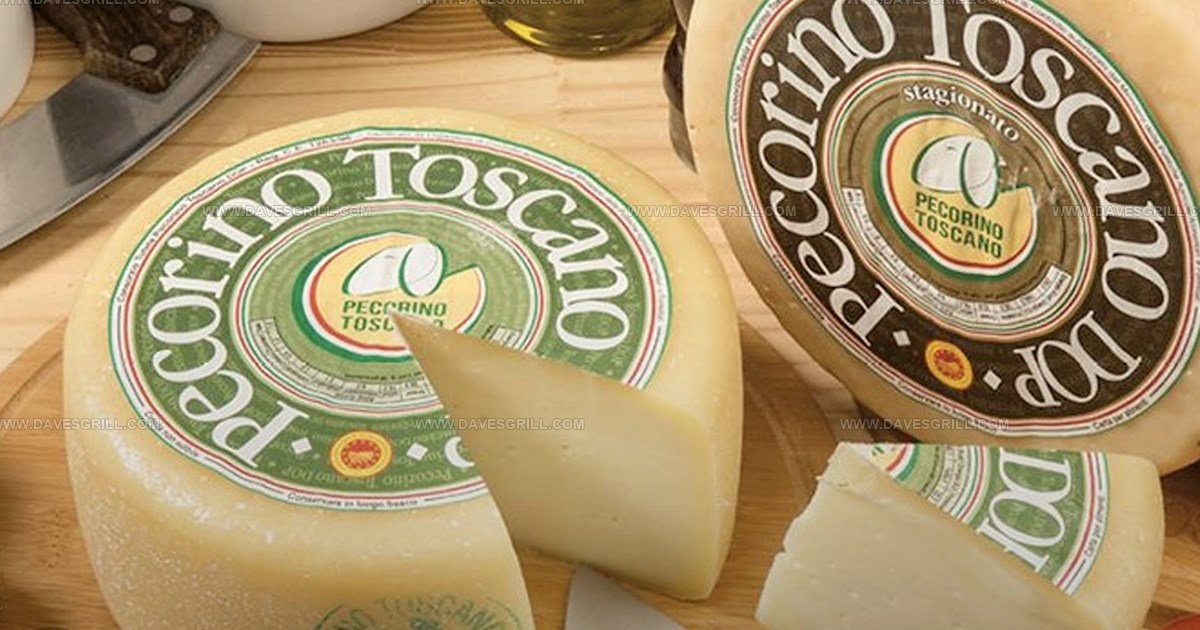
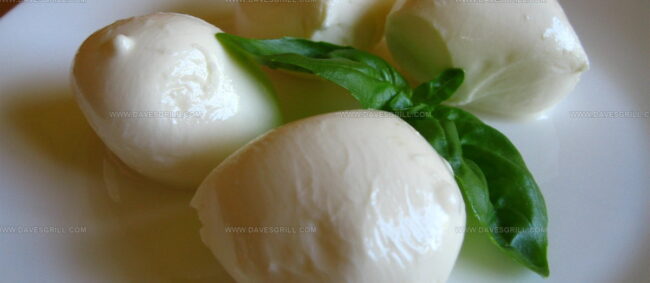
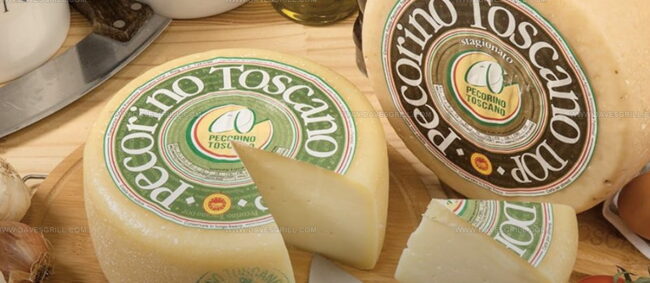
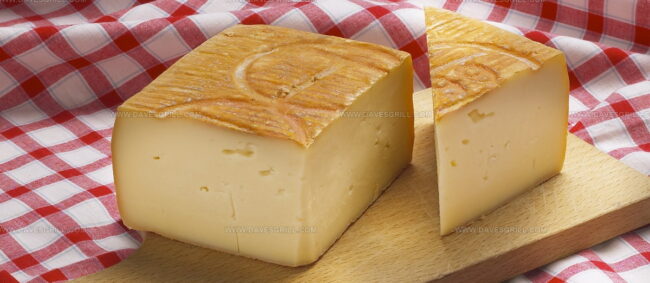
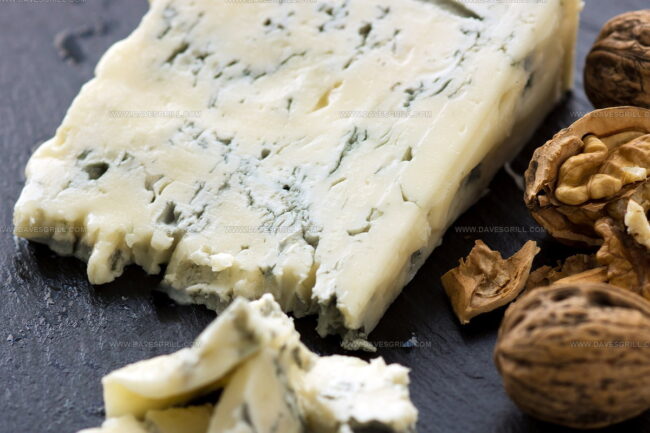
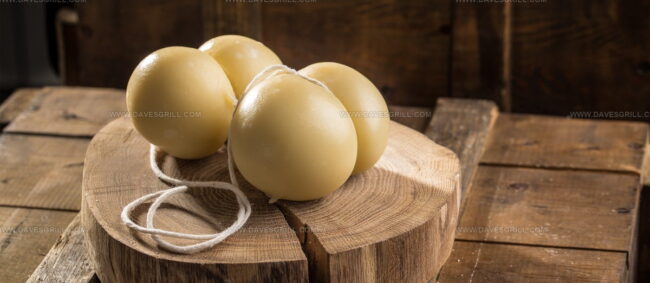
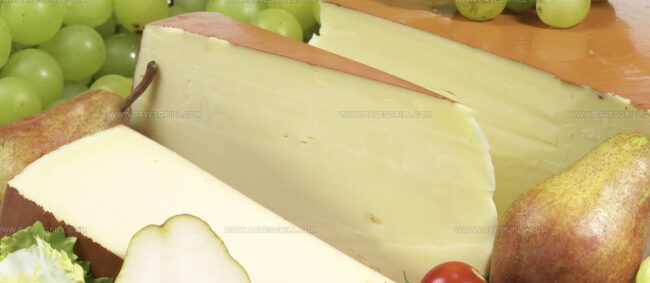
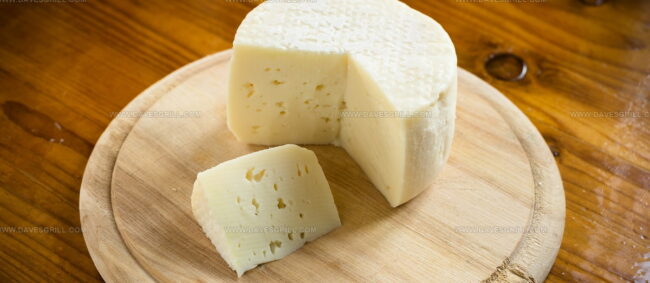
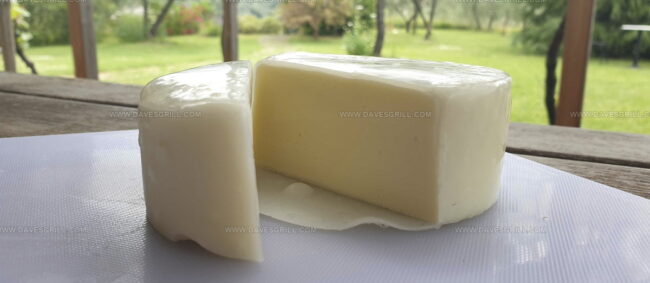
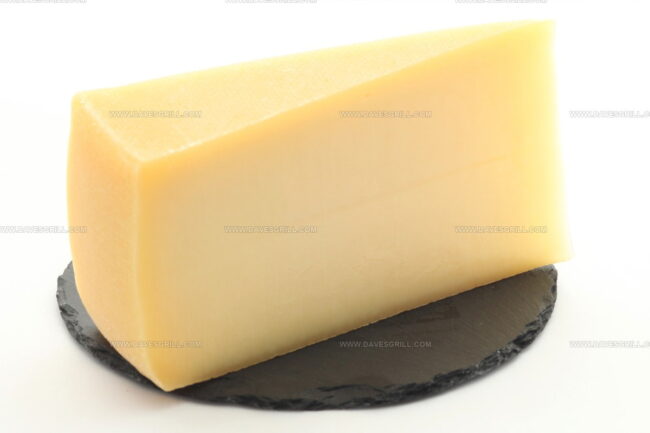
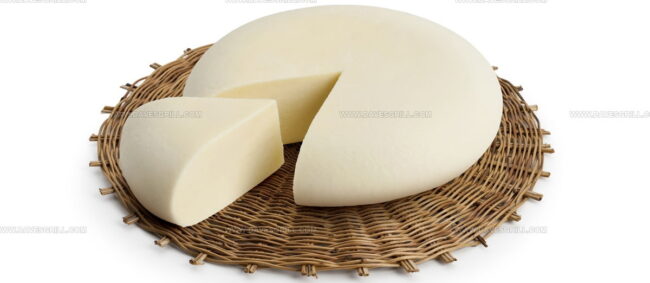
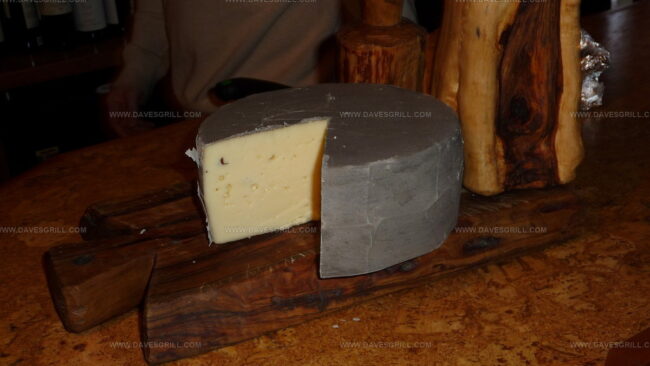
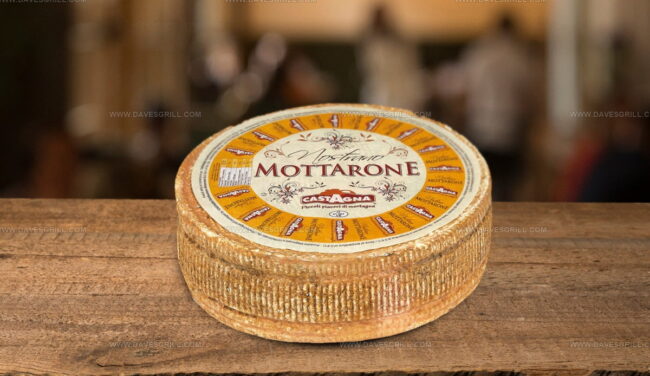
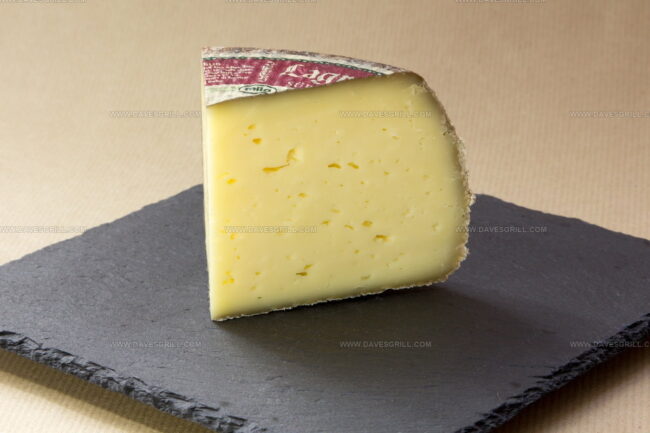
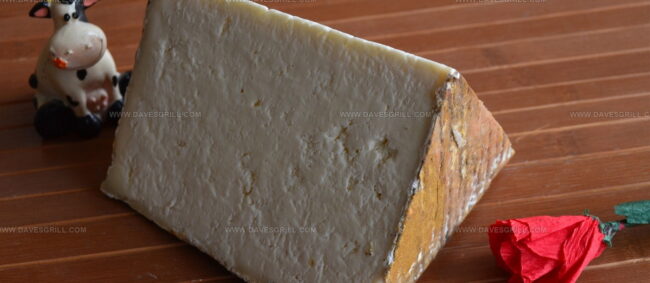
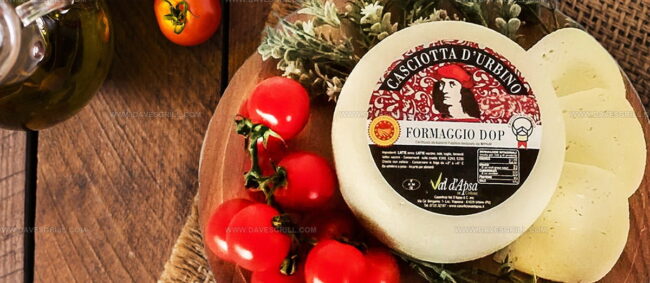
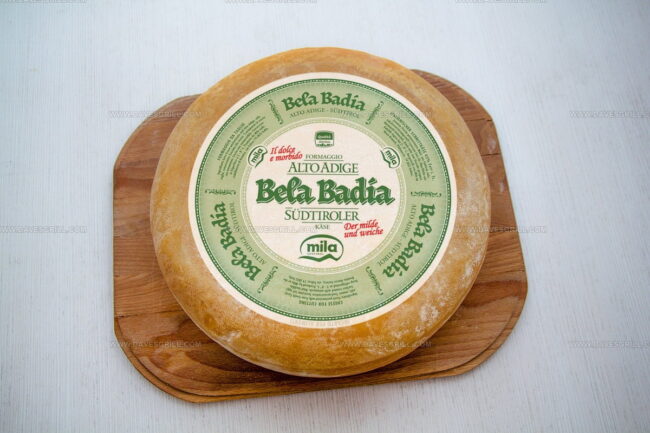
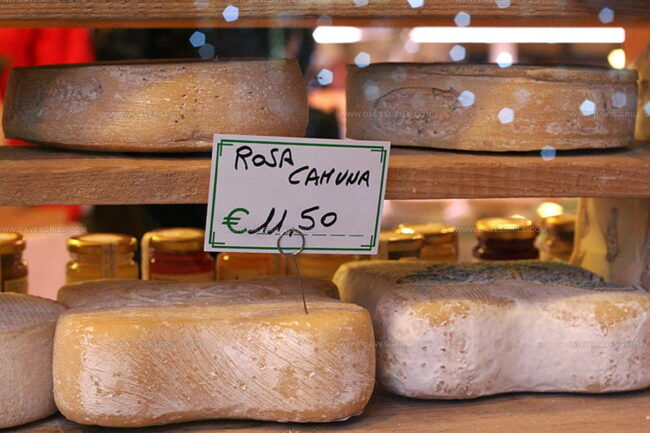
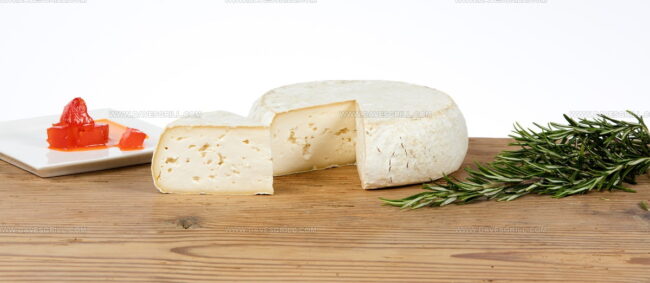
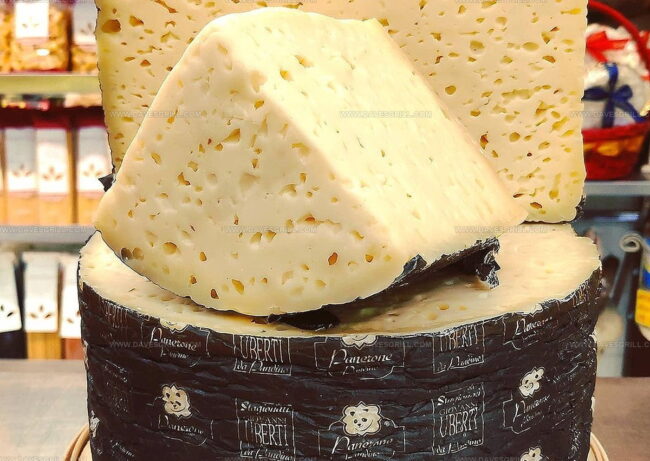
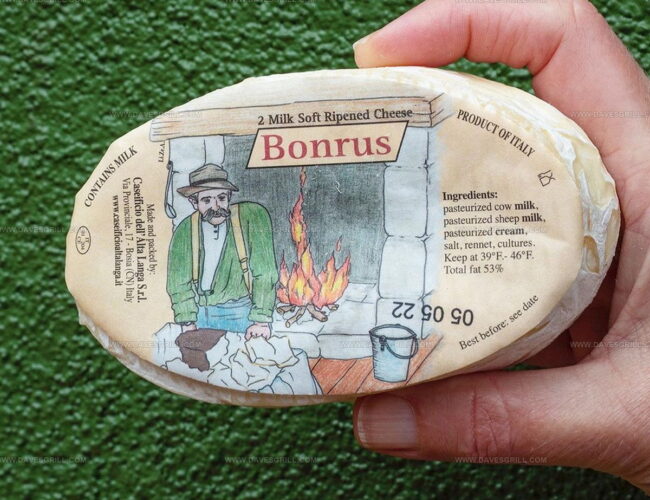
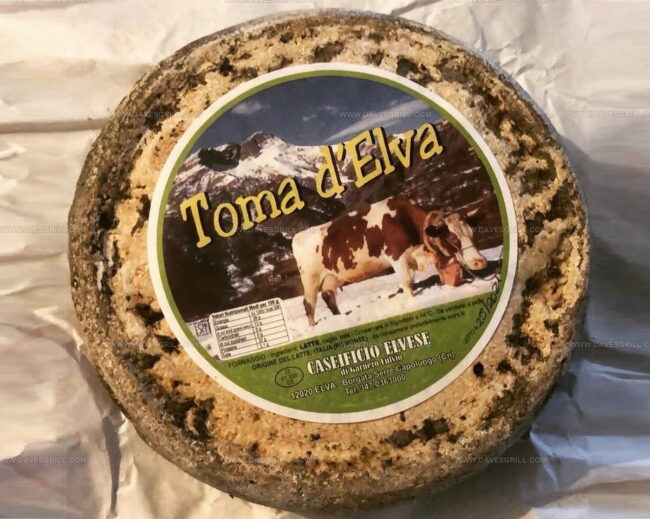
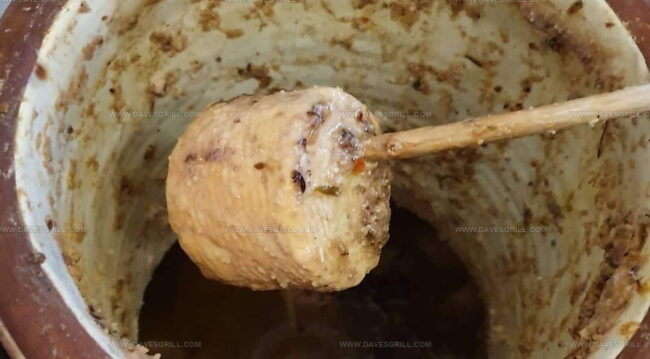
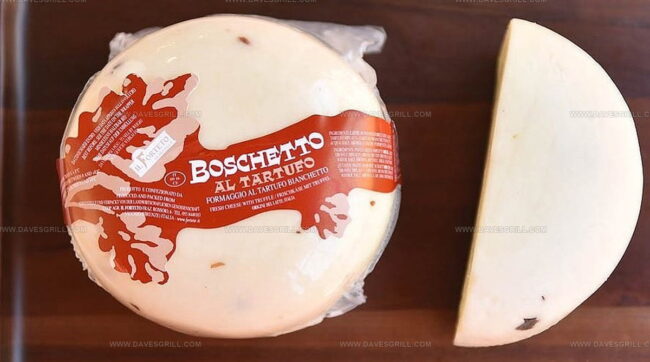
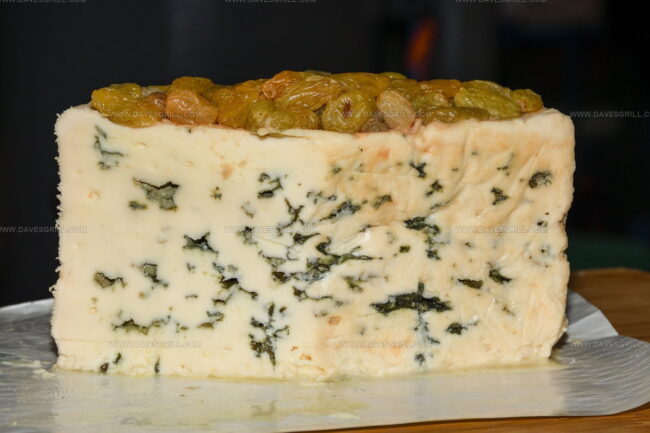
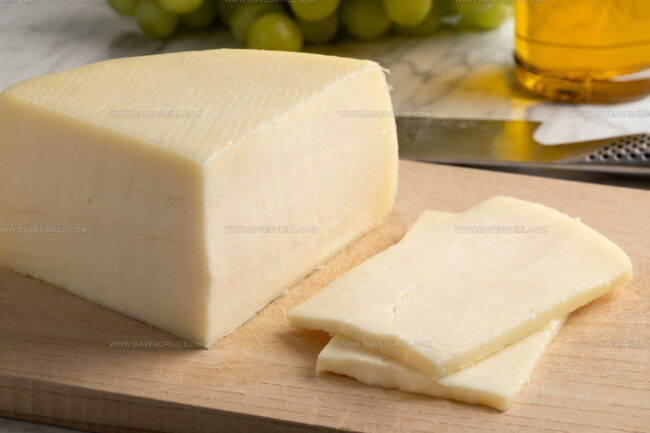
Dave Mitchell
Founder & Chief Recipe Developer
Expertise
Education
Asheville-Buncombe Technical Community College
Associate of Applied Science in Culinary Arts
Focus: Comprehensive training in culinary techniques, kitchen management, and menu planning, with a special emphasis on grilling and outdoor cooking.
Dave Mitchell is the heart behind Daves Grill, a cook, writer, and lover of all things grilled. He studied Culinary Arts at Asheville-Buncombe Technical Community College and spent years cooking, testing, and sharing recipes that actually work.
Dave started Daves Grill to keep things simple: one great recipe at a time. His food is bold, easy to follow, and made for real people with regular kitchens. From juicy steaks to quick sides, Dave’s recipes bring the heat without the hassle.